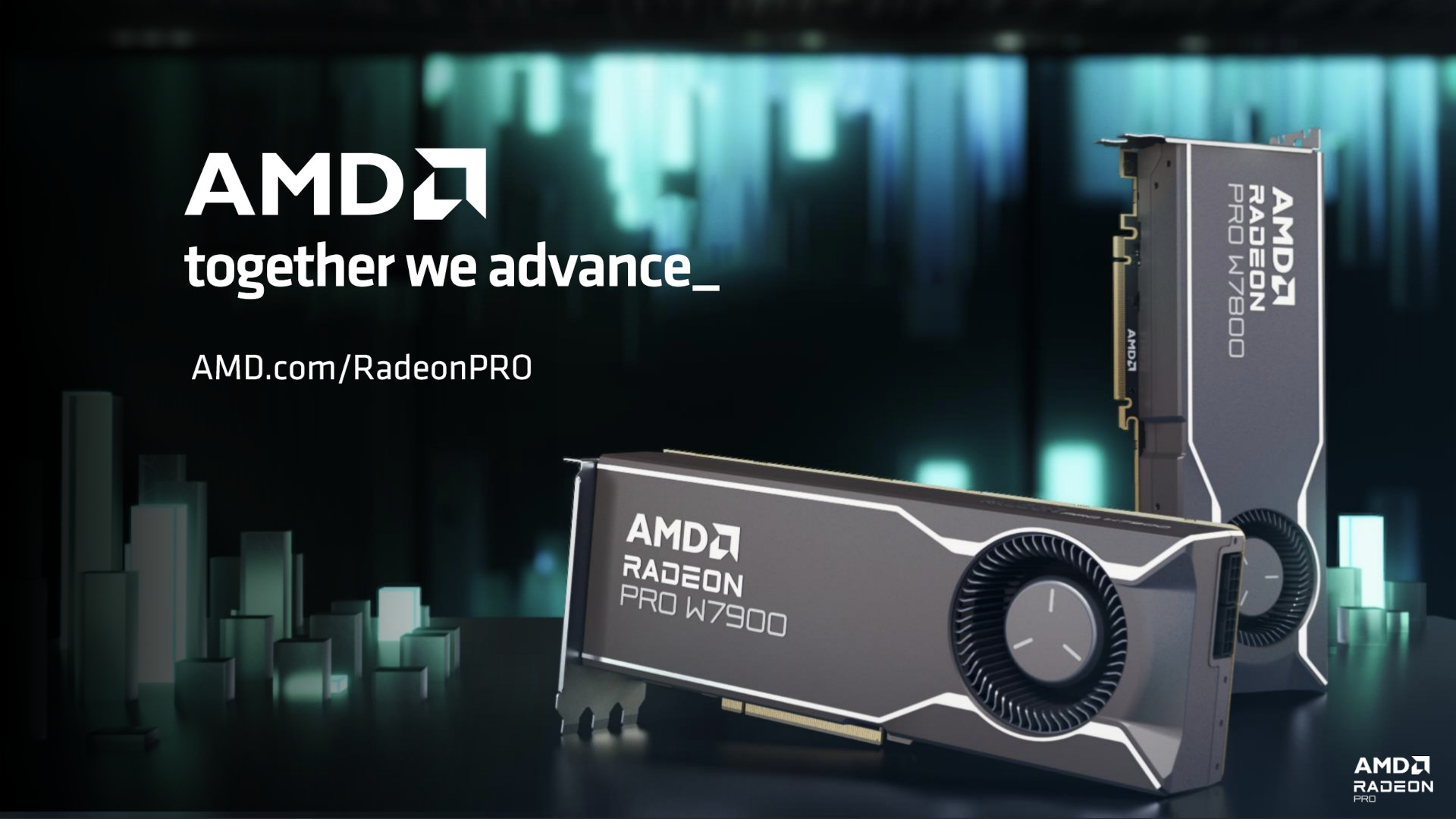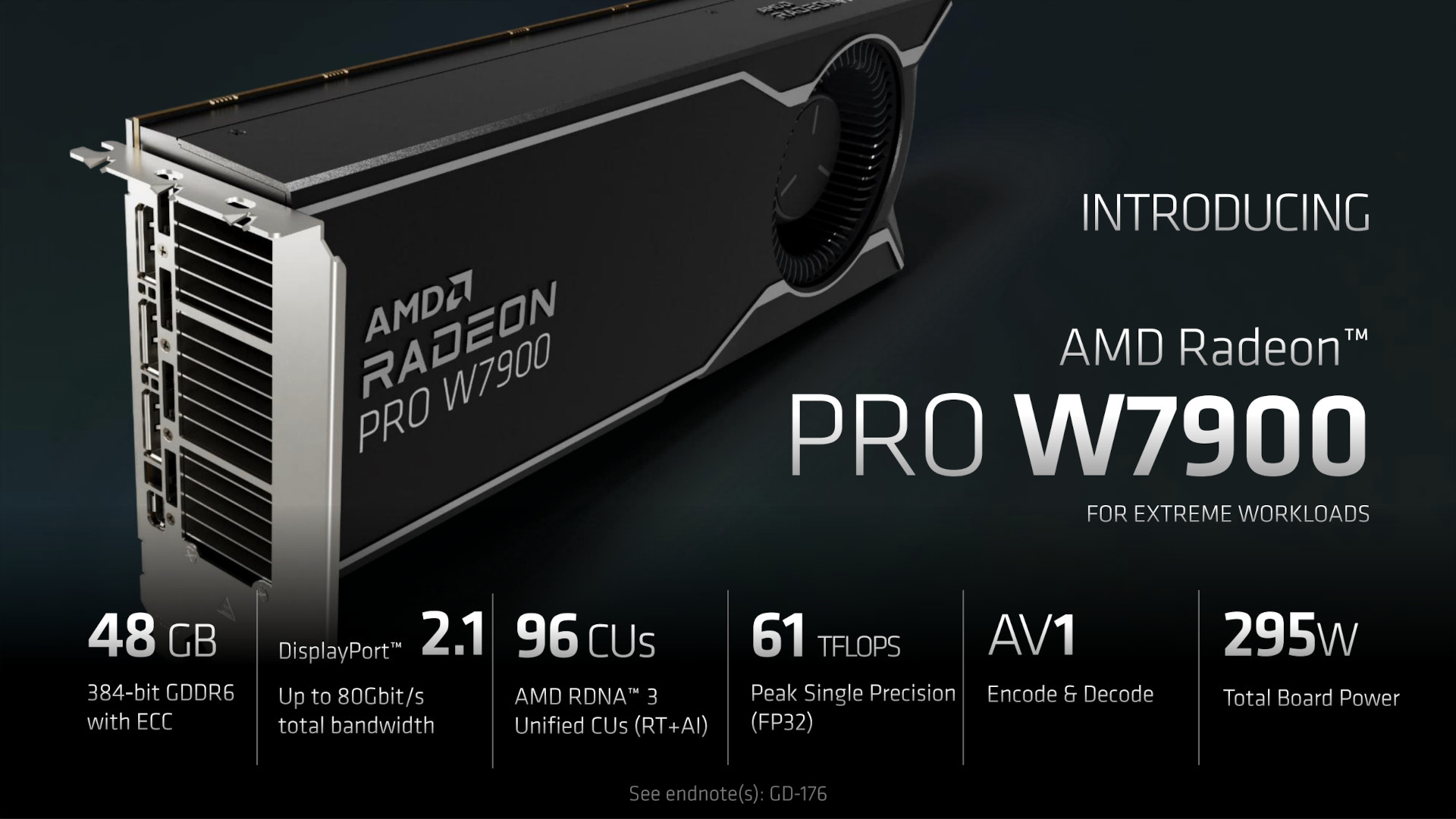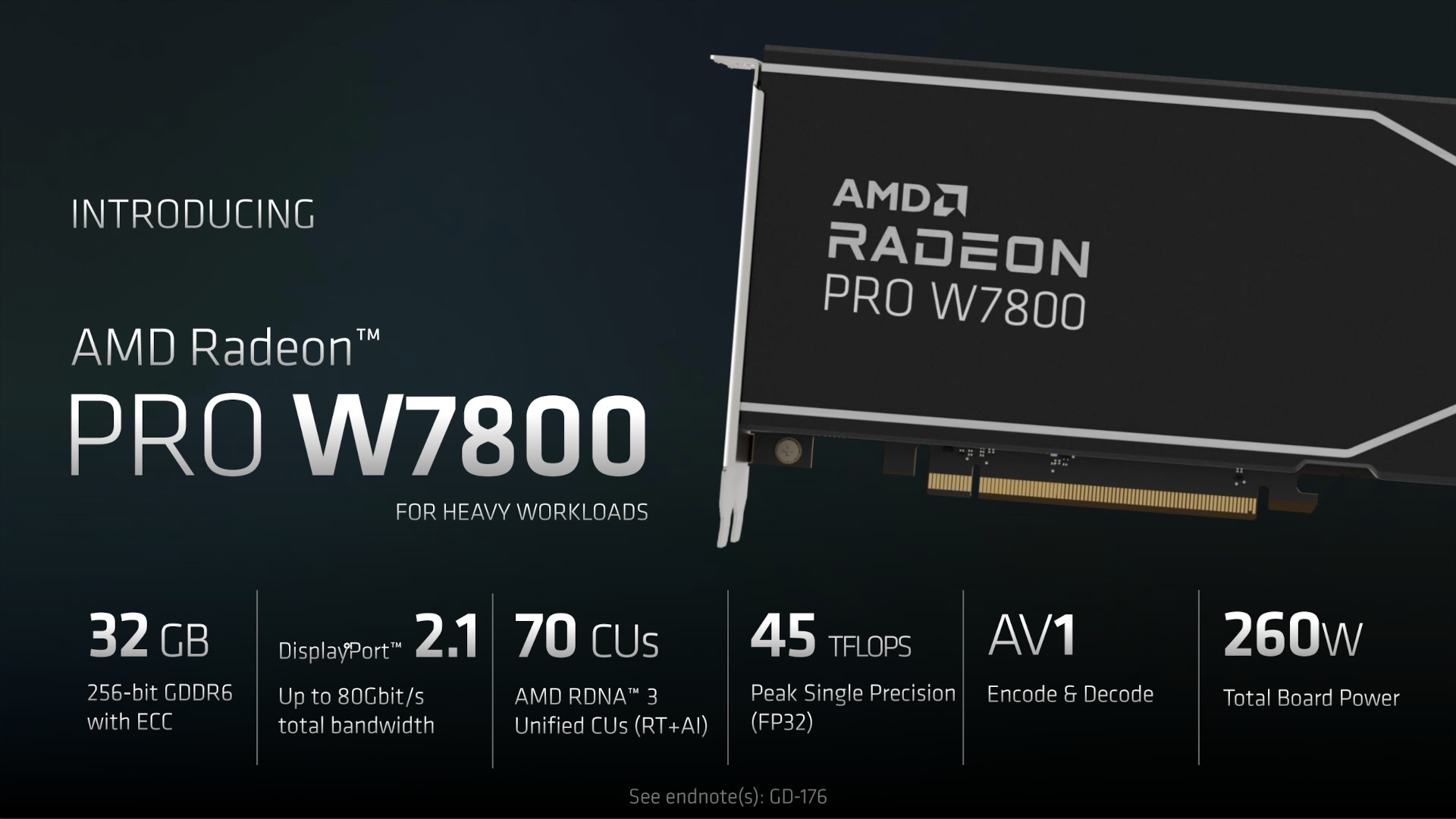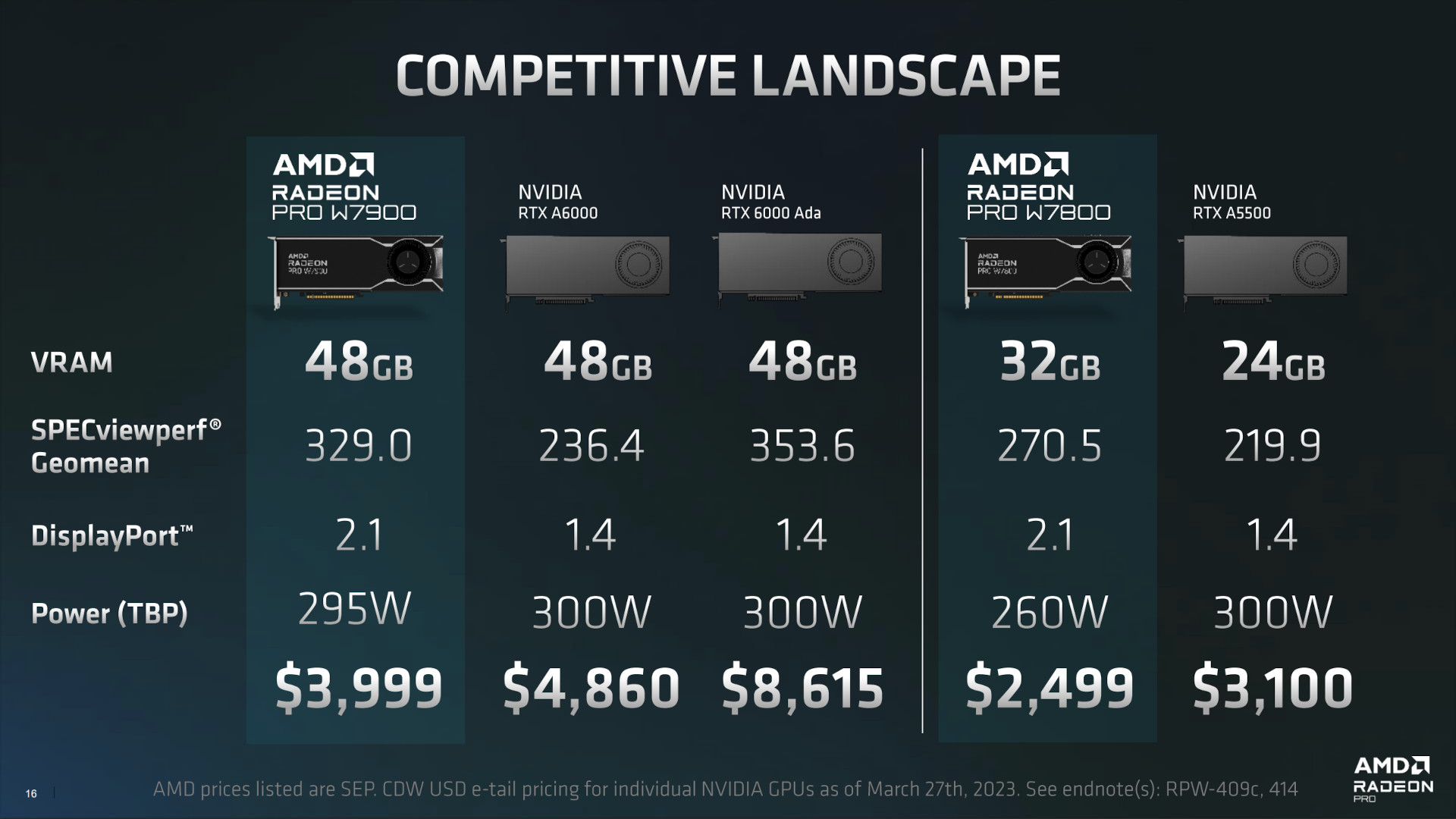
What you need to know
- The AMD Radeon PRO W7900 and W7800 are now available for purchase.
- The workstation graphics cards are designed for professionals in creative industries.
- The Radeon PRO W7900 costs $3,999 and the Radeon PRO W7800 costs $2,499.
- Both of the GPUs are available through Exxact in the United States.
The Radeon PRO W7000 graphics cards are the most powerful series of workstation GPUs AMD has ever launched. Built on AMD's RDNA 3 architecture, which is also seen in RX 7000 gaming GPUs, the new graphics cards promise high-end performance for professional creators. AMD announced the series last month and the Radeon PRO W7900 and Radeon PRO W7800 are now available for purchase.
You can't just go down to your local electronics store and pick up these graphics cards, however. In the United States, Exxact is the distributor you'll have to reach out to in order to order either of the new GPUs. The Radeon PRO W7900 costs $3,999 and the Radeon PRO W7800 costs $2,499.
Those in EMEA regions will be able to order the cards through ASBIS. Ask, Daewon, and Ingram Micro are the distributors for the APAC region.
Those price tags will seem high for anyone who is used to gaming GPUs, but they're within the expected range for high-end professional graphics cards for creators. The PRO W7000 GPUs offer 1.5x gains over their predecessors. AMD emphasized the performance per dollar of the cards when compared to NVIDIA's A-Series Ada GPUs.


The Radeon PRO W7900 and W7800 support DisplayPort 2.1, which can deliver uncompressed 8K video at 60Hz with HDR10 support. When using Display Stream Compression (DSC), the cards support up to 8K120 or 12K60. Those figures are needed for professional creators that render high-quality videos.
The GPUs also support AV1 encoding and decoding, which is used for ultra-high-resolution video.
As you'd expect from cards in this price range, the AMD Radeon PRO W7900 has 48GB of GDDR6 VRAM. The Radeon PRO W7800 has 32GB of VRAM, which is more than the NVIDIA RTX A5500 it competes with (24GB).

AMD also highlighted the 2x performance increase of these cards over their RDNA 2 predecessors. That improvement is thanks to dedicated AI acceleration and second-generation raytracing.







